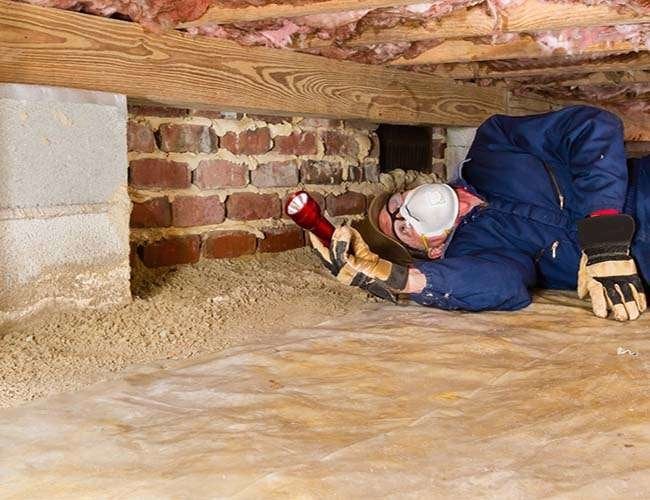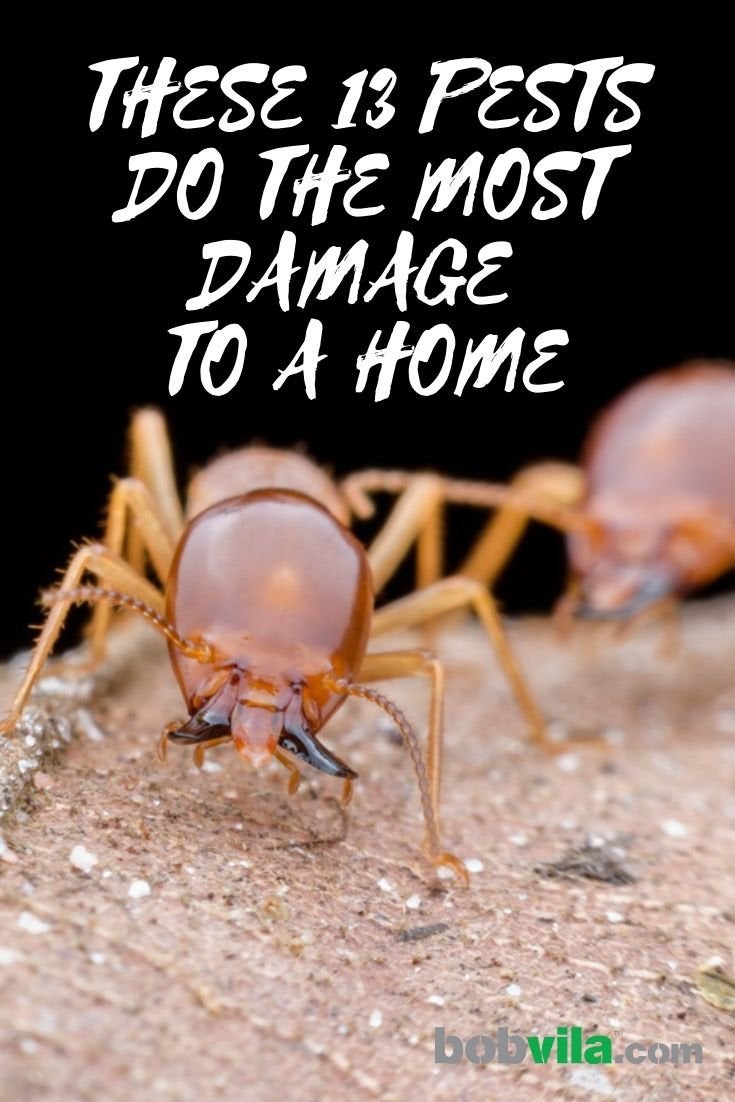We may earn revenue from the products available on this page and participate in affiliate programs. Learn More ›
Simple Solutions
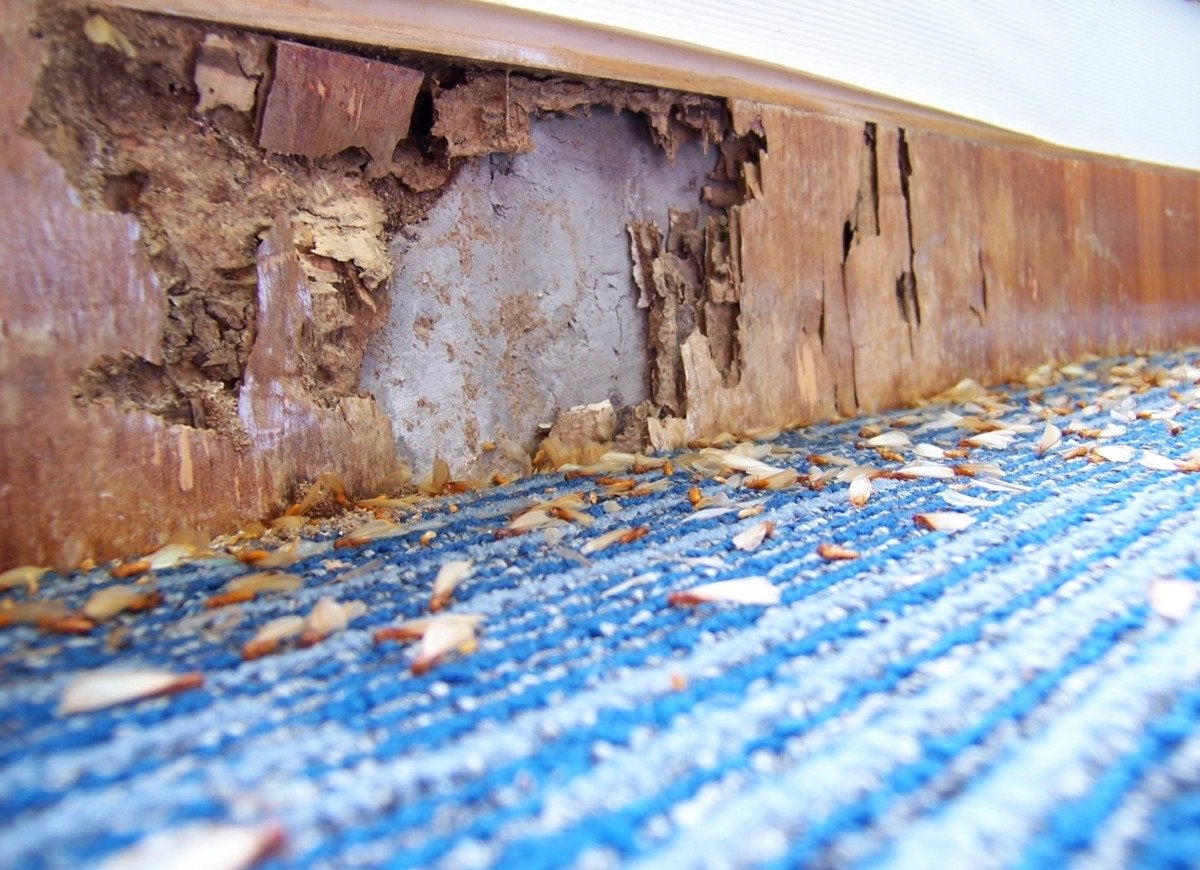
It’s understandable that you might panic when you discover an infestation in your home, but it’s best not to overreact. Many types of pest problems can be easily eradicated. But the best route is always prevention, and failing that, early detection. Pest control is one area where being vigilant really pays off.
Honeybees
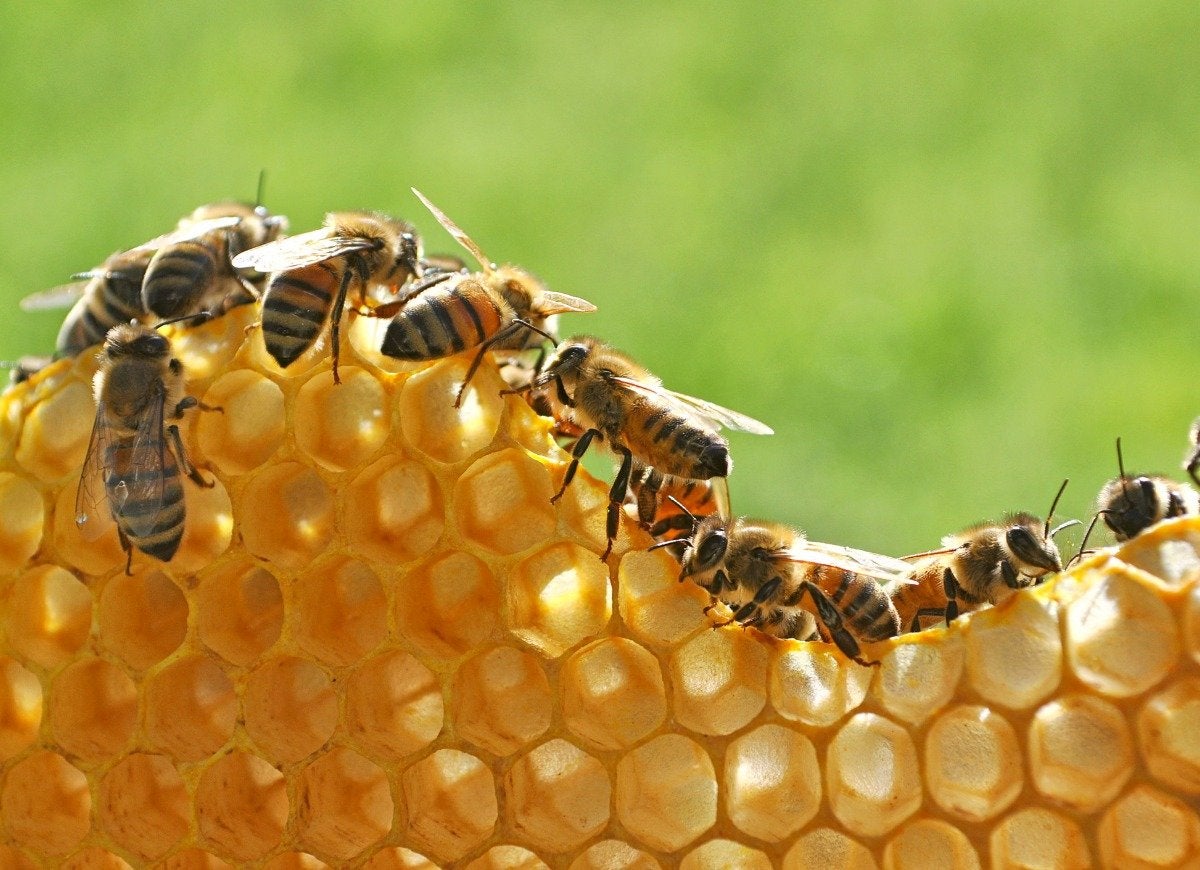
These ecologically important insects can enter through a tiny hole in siding or under the eaves and build a hive filled with honey that can damage walls and eventually cause the drywall to collapse under its weight. The best way to get rid of an active colony of bees is to call a beekeeper, who will use a special type of vacuum to remove the bees and relocate them to a new hive far away.
Moths

Attracted to light, moths tend to hover around porch lights and lit windows after dark. If a door is opened, they can fly inside, where they can do major damage to fabrics, chewing large holes through stored quilts, blankets, and sweaters before their presence is noticed. The best way to repel moths is with the old standby—mothballs—which you can place in the bottoms of drawers and boxes that contain stored fabrics. Note that mothballs can react with some types of plastics, so if you’re using plastic containers, use only polyethylene or polypropylene. Also, mothballs can be toxic to humans and pets, so if you’re looking for more natural solutions, consider dried lavender, which is reputed to repel moths.
Related: Solved! What to Do When You Have Moths in the Closet
Carpet Beetles
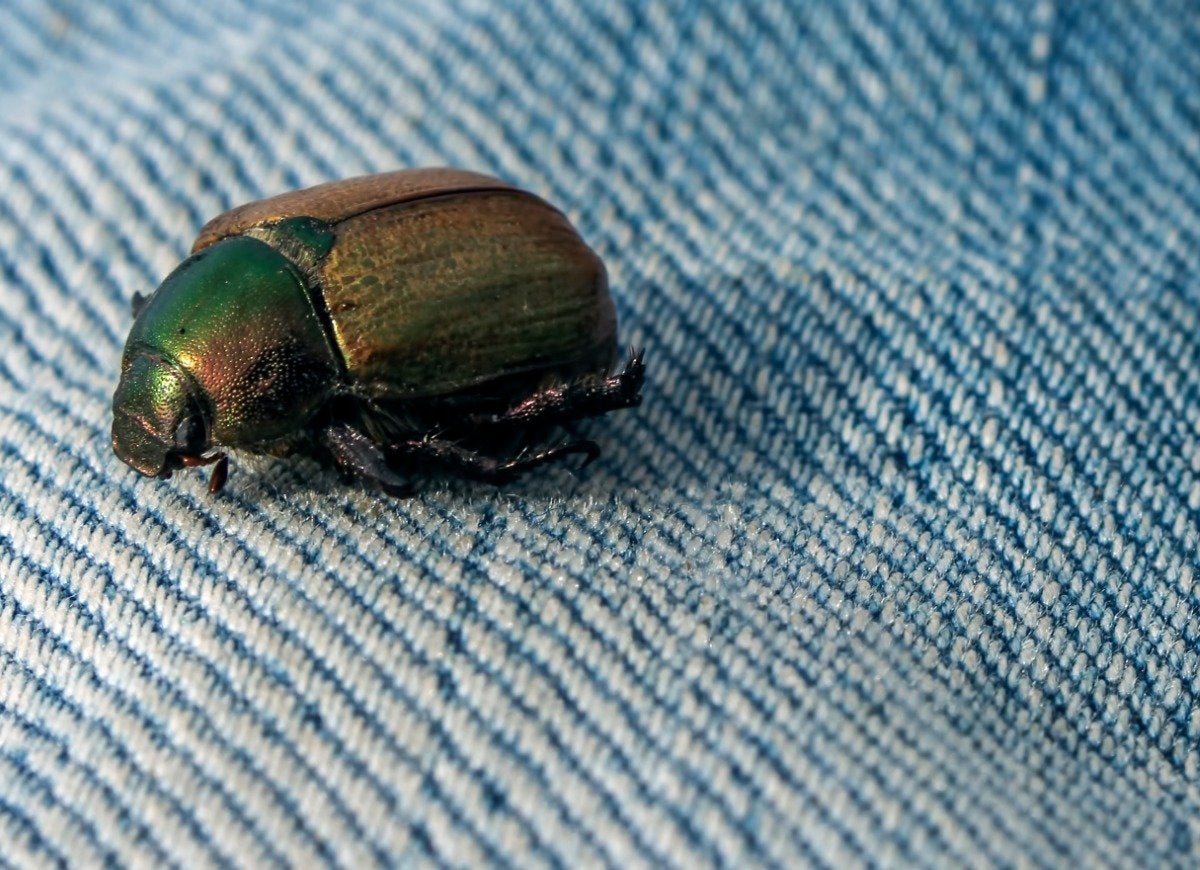
These tiny beetles are less than 1/8 inch long, but they can chew large holes in rugs, carpeting, upholstery, and draperies. A natural way to get rid of carpet beetles, is to sprinkle food-grade diatomaceous earth (DE) over infested carpeting and upholstery, and brush it in. Made from finely ground fossils, DE is nontoxic (although you should avoid inhaling it), but it does cause a number of insects, including beetles, to dehydrate and die. Vacuum thoroughly in a few days, and your beetle problem should be gone.
Termites
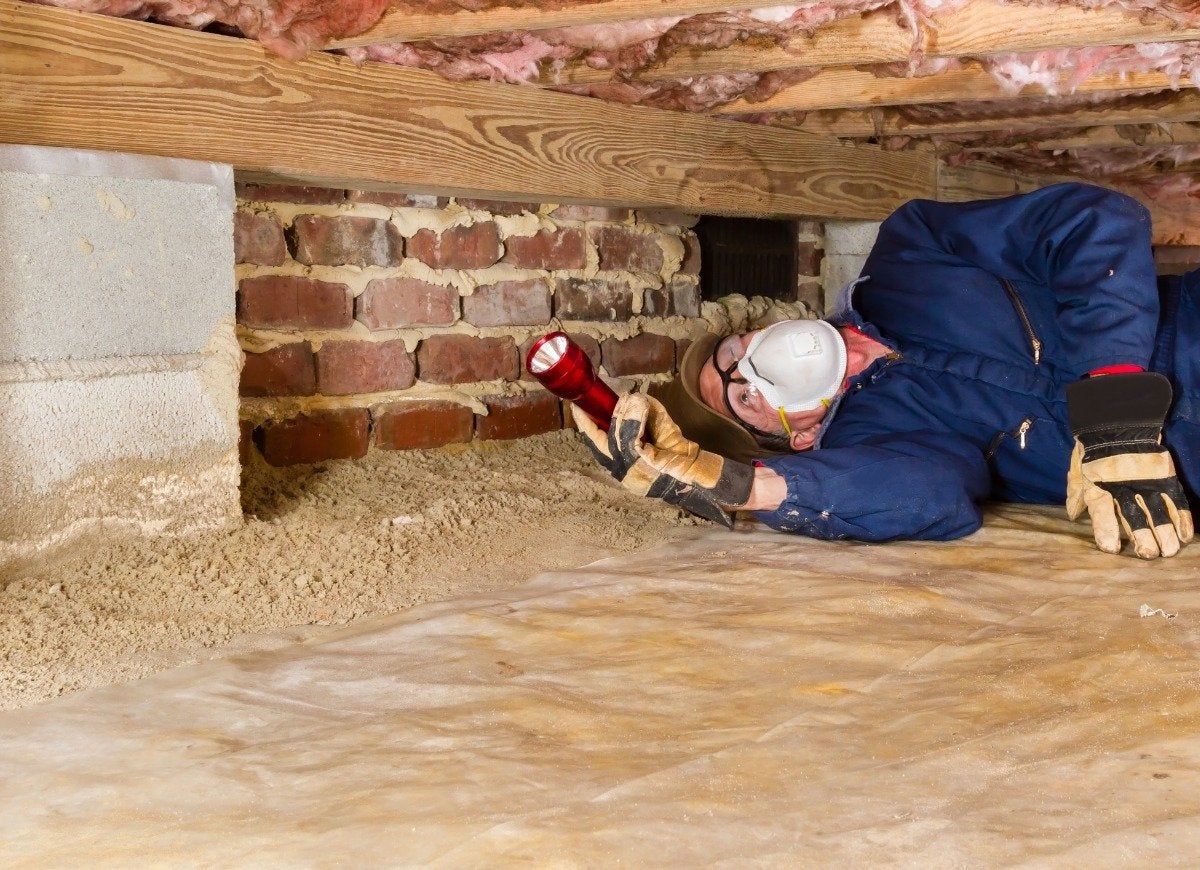
Considered by many to be the most destructive of all household pests, termites can cause thousands of dollars of damage to a home’s wood structural system before they’re discovered. To get rid of termites, you need to call in a professional exterminator. But you can reduce termite damage by keeping an eye out for telltale signs that they’re chowing down in your home, such as the presence of mud tubes on the outside of the foundation and small piles of tiny, pellet-shaped, sawdust-like droppings on the floor near the walls.
Related: 9 Most Common Signs of a Termite Infestation (And What to Do if You Have One)
Powderpost Beetles
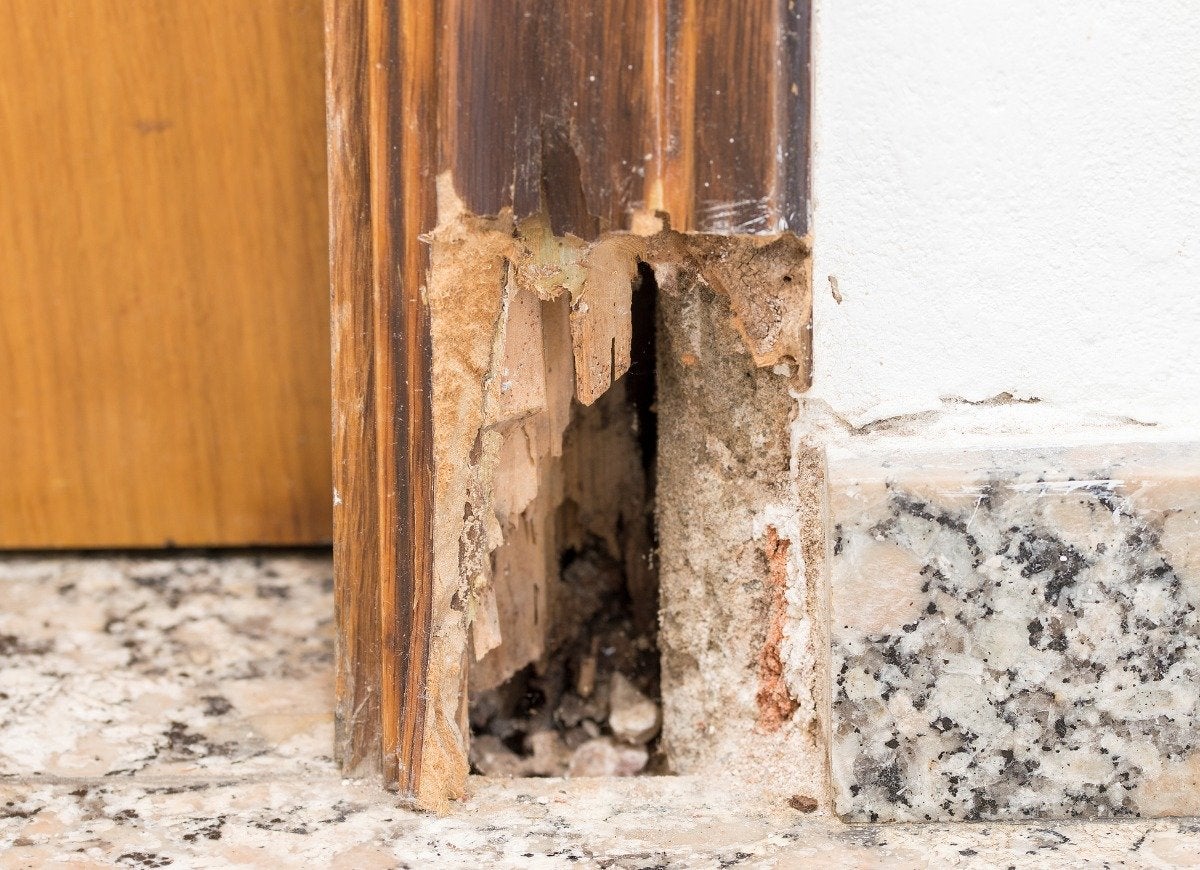
While not quite as damaging as termites, powderpost beetles come in a close second. These insects chew through wood, especially wood that has not been painted or sealed. To keep these wood-boring beetles at bay, apply a wood treatment product that contains borate, such as Nisus Bora-Care (available on Amazon), to bare wood, including wall studs and floor joists.
Squirrels
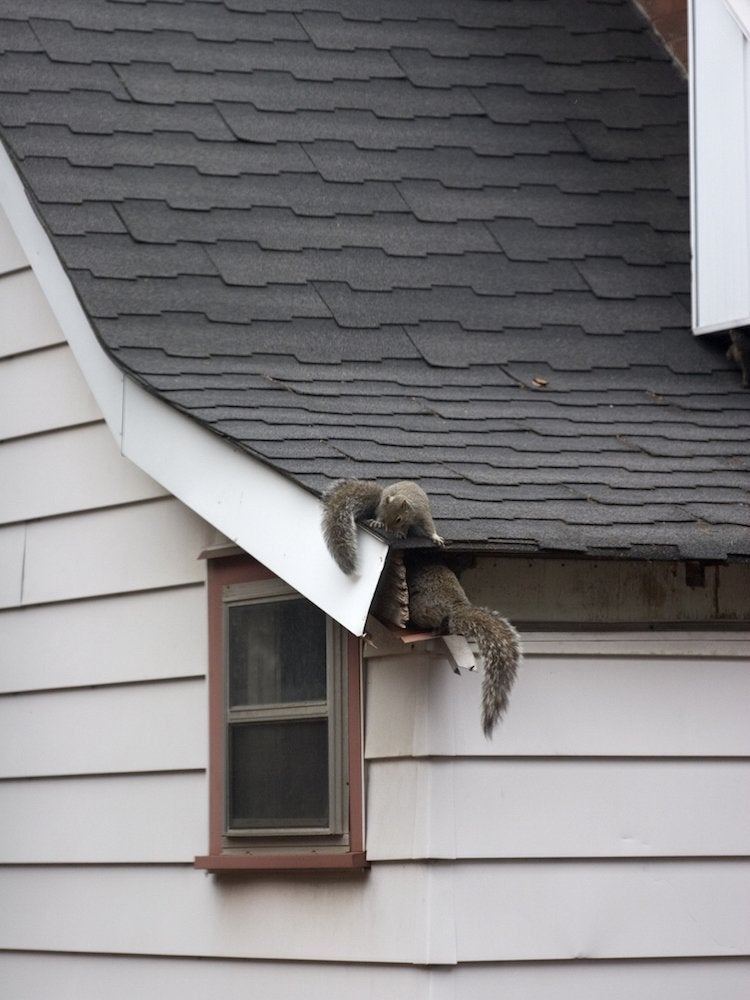
You may enjoy watching the antics of these lively, agile critters, but you won’t appreciate the holes they chew through wiring, ducts, and insulation if they find their way into your attic and walls. Once they’ve made it inside, you have two options: You can call in a professional to trap and remove them, and then seal up their entry points. Or you can encourage them to move elsewhere by eliminating their food sources and making access more difficult (for instance, trimming back tree branches and installing specially made guards on wires that lead to the house). As well, some studies have found that capsaicin, the compound in peppers that makes them hot, has a deterrent effect on squirrels. Finally, if you go the DIY route, before you seal up the squirrels’ entry point, stuff it with crumpled-up newspaper and wait a few days. If the paper hasn’t been moved, it’s safe to close up the access point. Never close up an entry point if squirrels may still be in your house!
Fire Ants
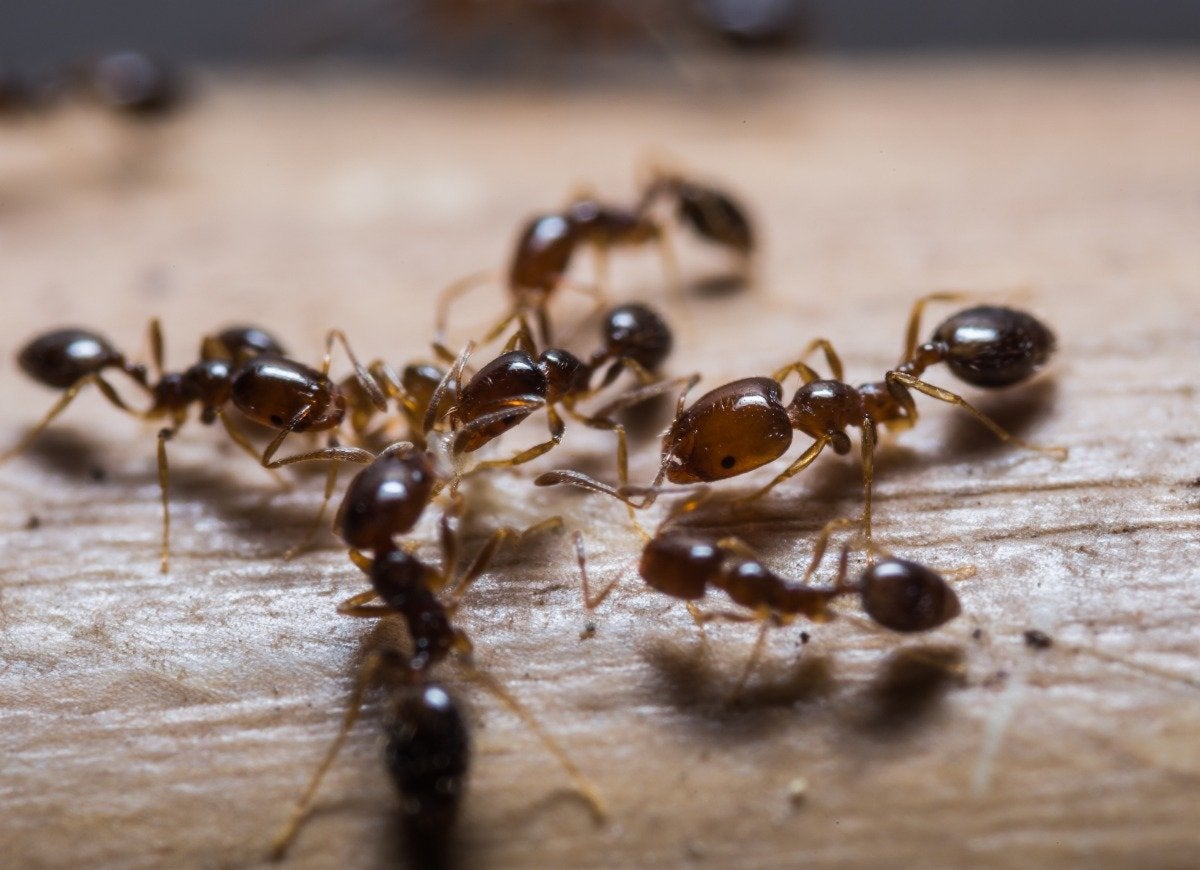
If you’ve ever been stung by fire ants, you know to give them a wide berth. But did you know that these biting pests are not just a threat to humans, but they’re also a threat to electrical components in your home. They’re attracted to electric fields and frequently set up shop in outlets, HVAC units, and electrical boxes. To get rid of them, spread diatomaceous earth around the base of the foundation of your house and inside electrical boxes, such as breaker boxes and transformers.
Cockroaches
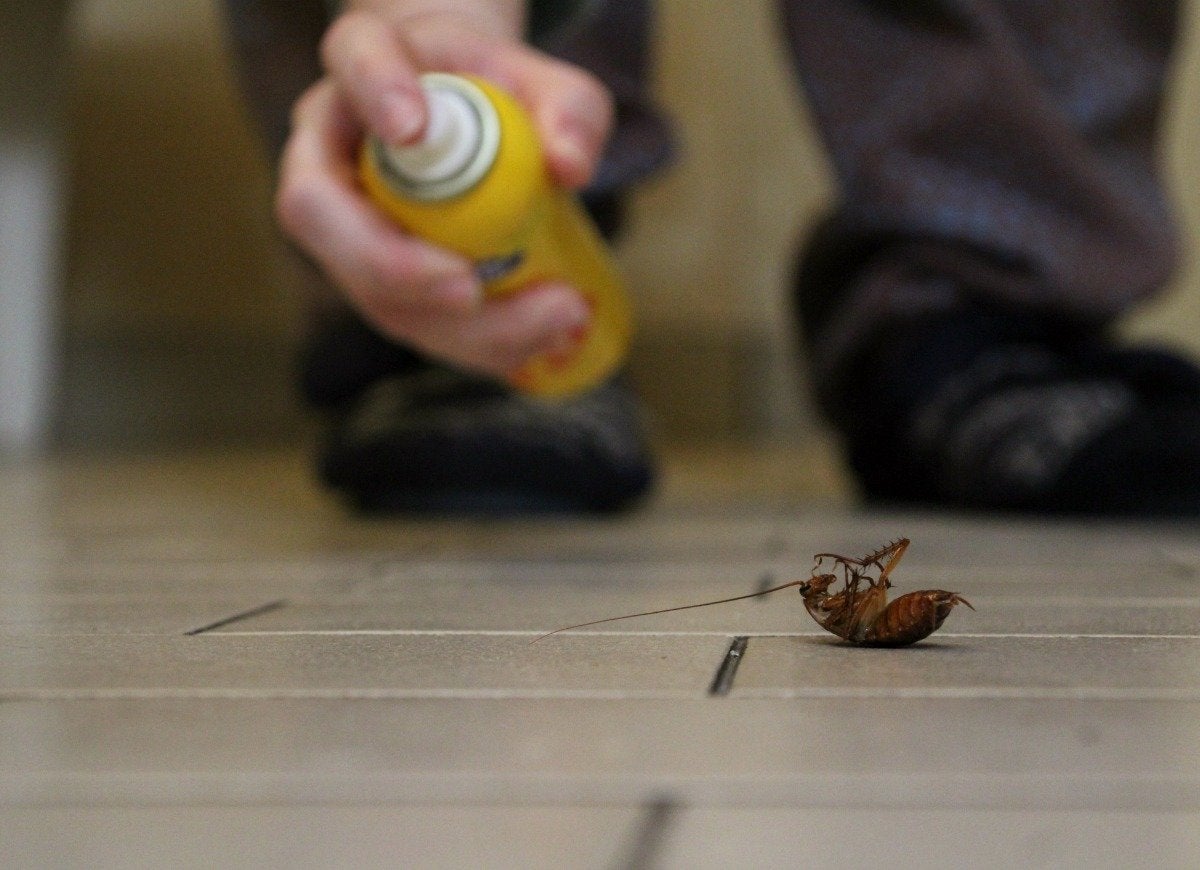
Not only can cockroaches carry and spread diseases, they can chew through fabrics and paper products, destroying wallpaper and even furniture if they’re not controlled. Eradicating cockroaches requires perseverance: Combine one part liquid fabric softener with two parts water in a spray bottle. Spray the backs of cabinets, along baseboards, and directly on roaches when you get the chance. Be diligent: It can take up to a month of daily spraying to get rid of the pests.
Horntail Wasps
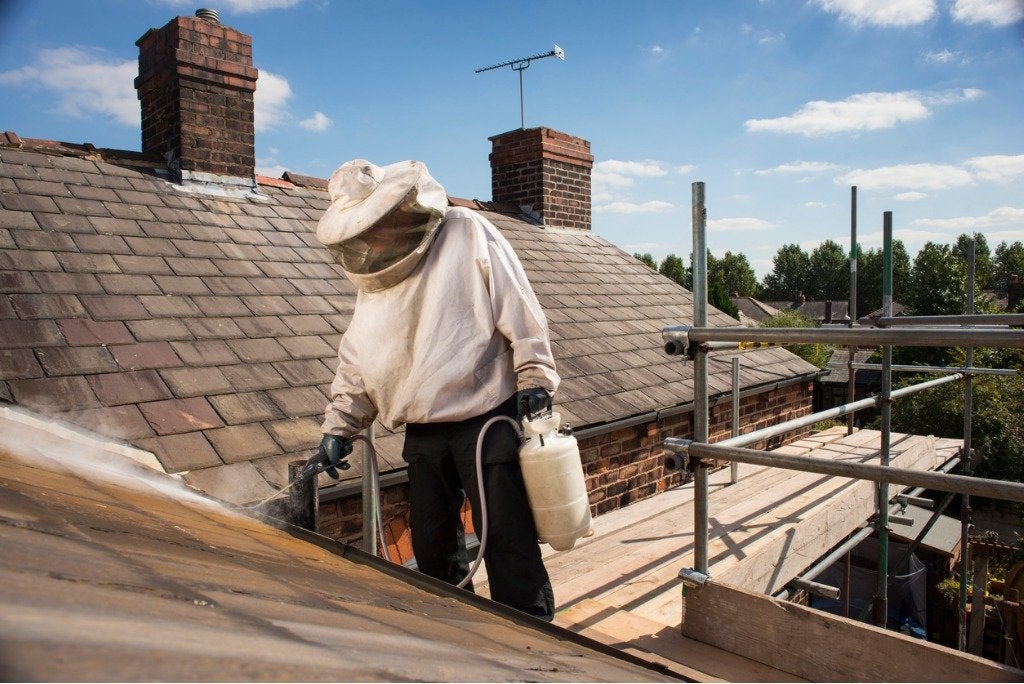
While not true wasps, horntail wasps are flying wood-borers that typically bore into trees but can occasionally be found living in (and chewing up) the wood members of a house. They can be dissuaded from settling in your home by spraying the wood with a product that contains pyrethrin, such as Southern Ag Natural Pyrethrin Concentrate (available on Amazon), a natural insect repellent made from chrysanthemum flowers.
Camel Crickets
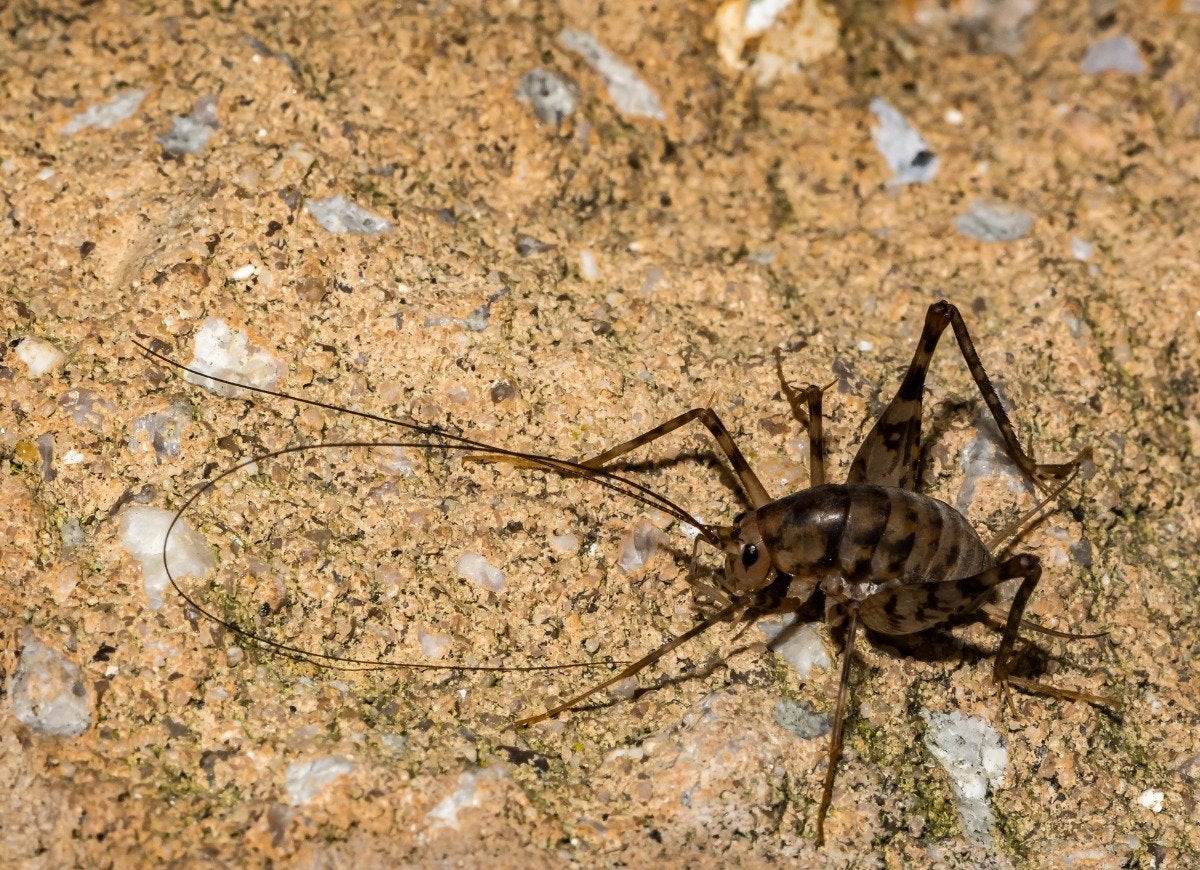
Sometimes called “spider crickets” because their legs resemble those of spiders, camel crickets are attracted to damp areas, such as unfinished basements, where they dine on wood, stored fabrics, and even cardboard boxes. Keep these little buggers out of your basement by sealing cracks in foundation walls where water can enter and by running a dehumidifier, if necessary, to get rid of moisture.
Mice
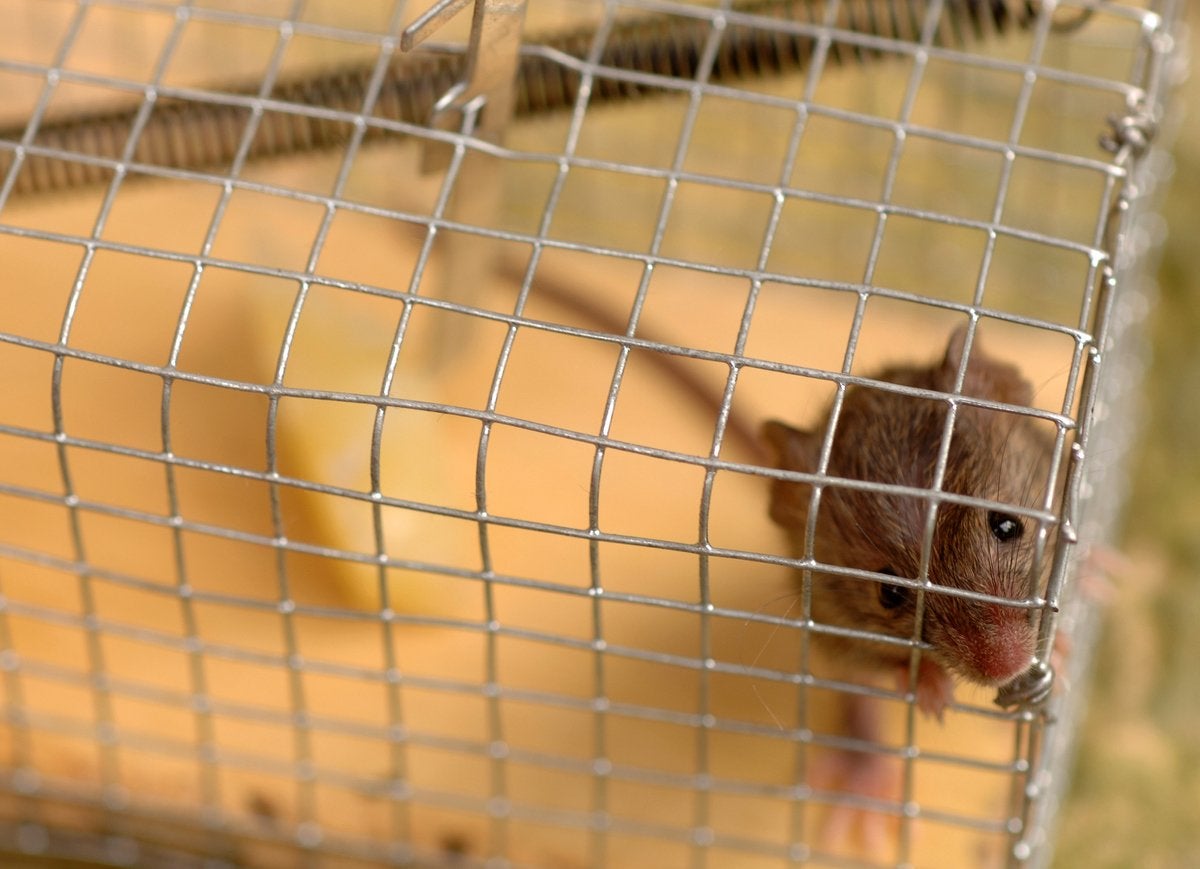
Homeowners are often surprised to learn mice have taken up residence in their walls because they don’t understand how they could have gotten in. These cute little fellows can squeeze through dime-size holes in foundations or siding, and they breed so rapidly that you could end up with dozens of mice chewing the insulation in your walls before you know it. First, find out how they’re getting in from outside and where they’re living. Close up any exterior access holes you find, and place catch-and-release mouse traps near their indoor access points. Use steel wool to close up any openings around pipes, near the radiator, along the baseboard, along the basement foundation, and anywhere else mice could gain access. And you might want to think about getting a cat!
Silverfish
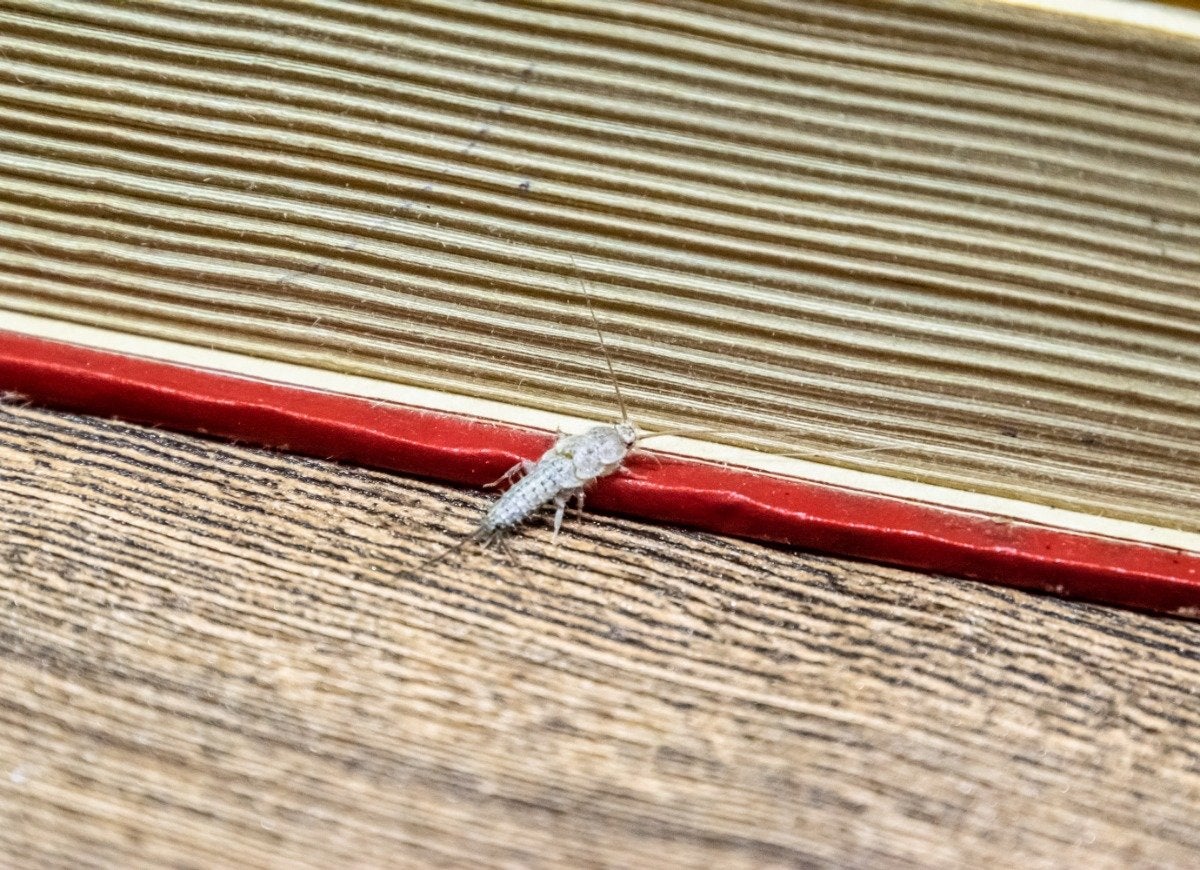
Considered a primitive insect, the silverfish doesn’t have wings and it looks rather innocuous, but it loves to eat grains, including oats, wheat, and flour, and it can chew through wallpaper and other paper products, leaving you with holes in your favorite books. Most silverfish infestations can be stopped by throwing out infested foods and wiping down shelves with an all-purpose cleaner. To keep them away, store dry foods in sealed plastic bags or closed plastic containers, and clean bookcases frequently.
Woodworms
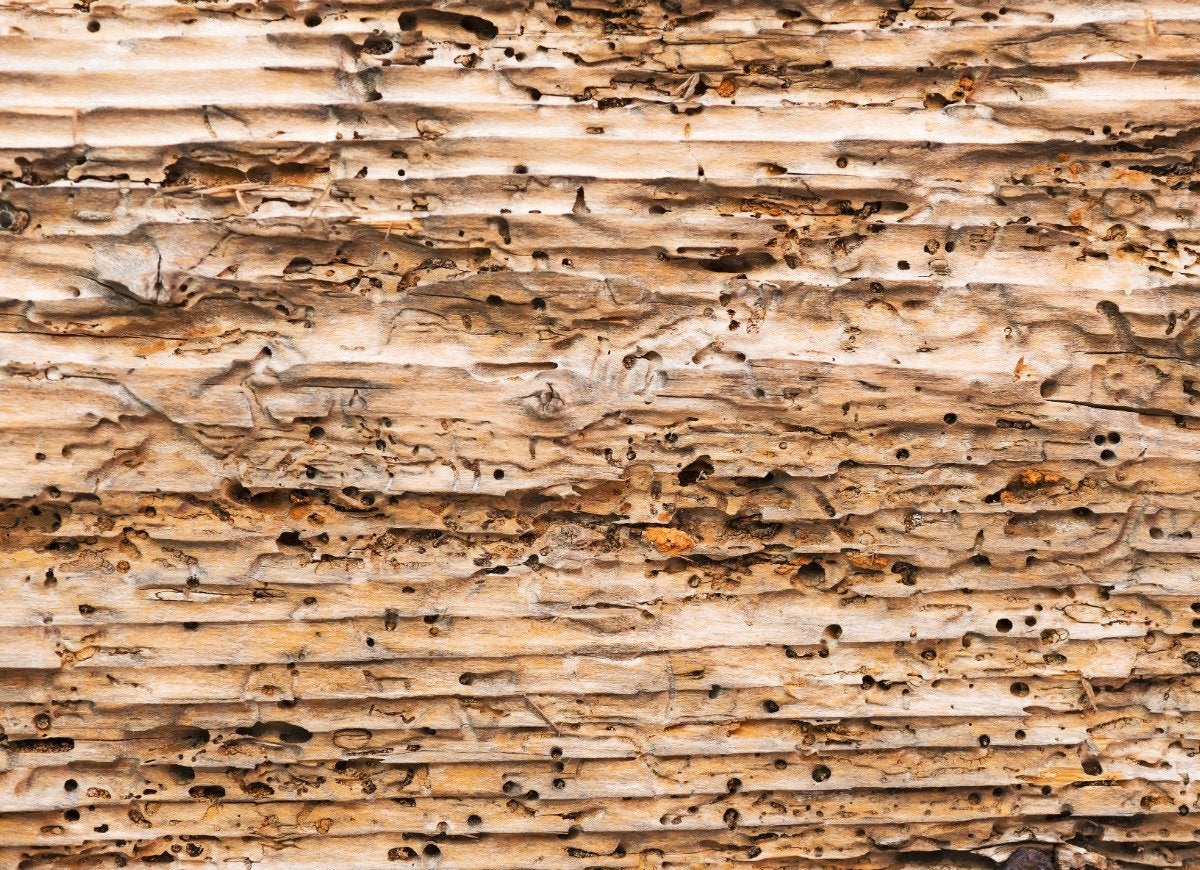
Woodworms are the larvae of a number of beetles. As they develop, they can chew through wood furniture or the wood members used to build your home. While these larvae are typically found outdoors, when beetles lay their eggs in your home, you can end up with a woodworm infestation. Treat affected wood with a spray-on or brush-on product that contains pyrethrin, a natural repellent that is effective in protecting against woodworm.

Everything You Need for a Lush and Healthy Lawn
Keeping your grass green and your plants thriving doesn’t just take a green thumb—it starts with the right tools and supplies.

